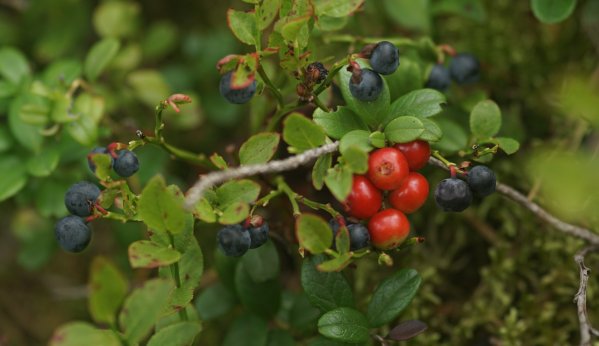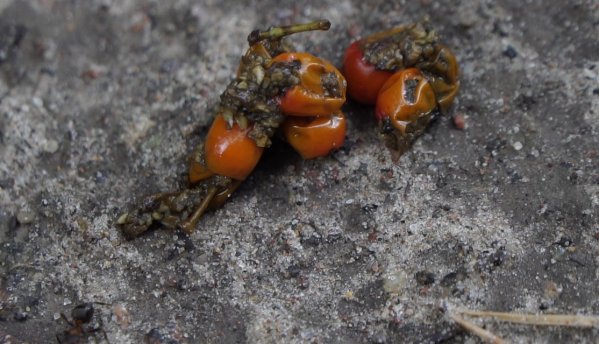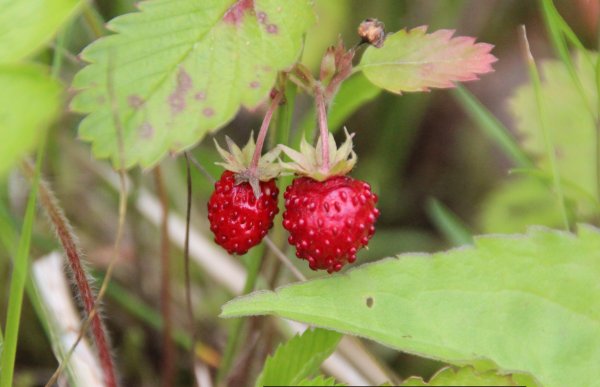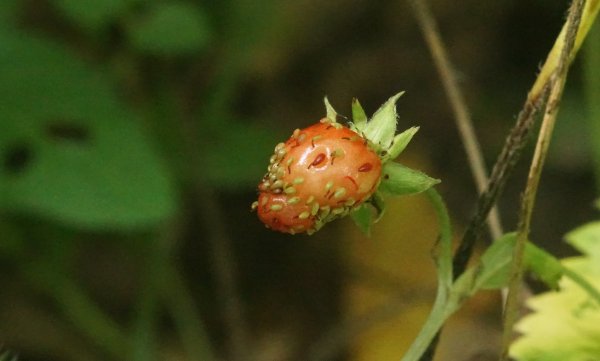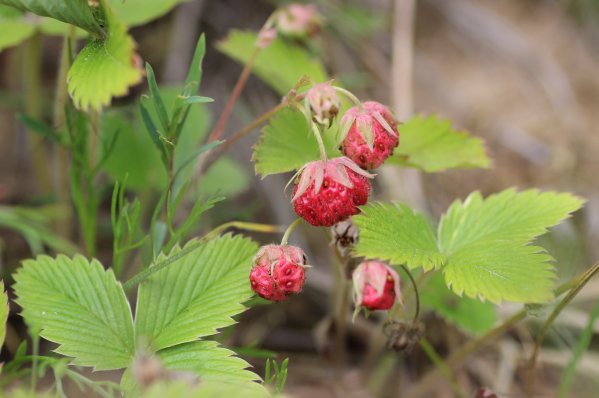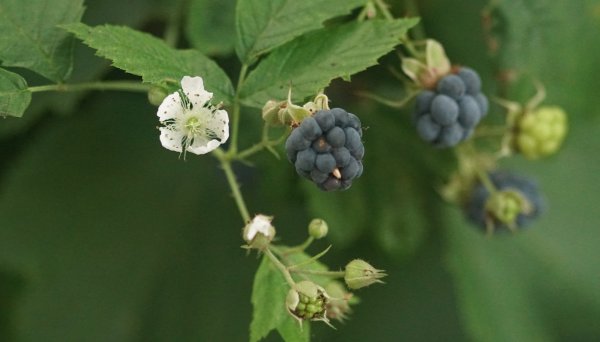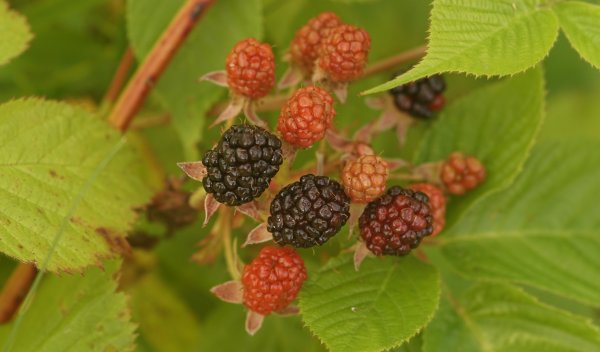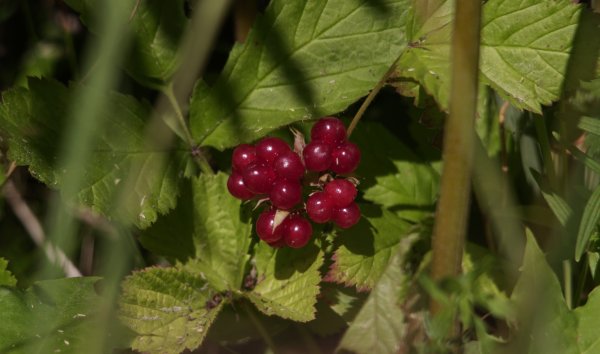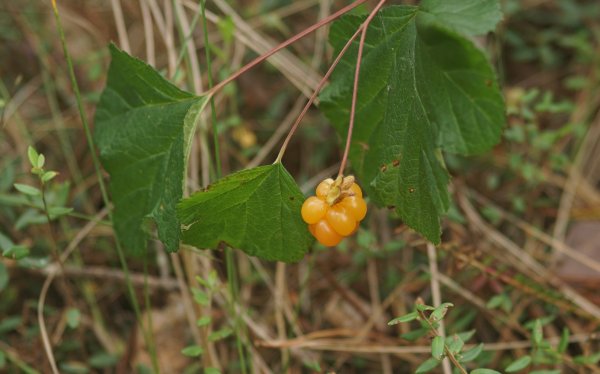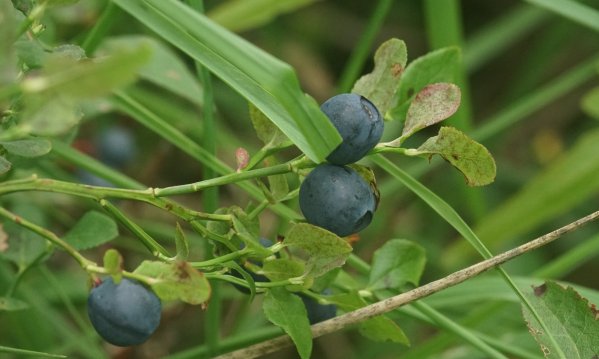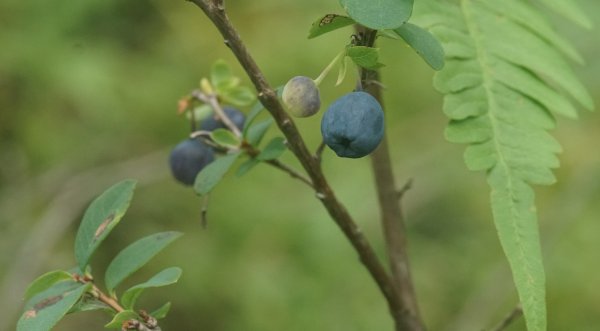Wild Fruit Orchard: a World of Delicious Berries
Summer and autumn are the seasons when people diligently collect the gifts of nature. Both the mushroom and the so-called berry season has been going on for quite a long time this year. Why the “so-called”? Nature researcher Ilmārs Tīrmanis tells that it is because not all natural goods, which we usually refer to as berries, are berries in the biological sense.
“Please don't be offended by reading specific botanical terms in this message here and there. From now on, the term “fruit” will prevail. Many berry pickers are indeed fruit pickers. In this context, it should be added that all berries are fruit, but not all fruit are berries,” with these lines nature researcher begins his series of stories about a wild fruit orchard.
Say NO to unfamiliar forest bounties
Not all mushrooms are edible and not all berries can be put in mouth. Adults should not lose attention – make sure that children do not eat any poisonous or unfamiliar fruit. Most often, children get poisoned by poisonous fruit, which outwardly resemble those of benign fruit that have already been eaten without any harm, so children need to be explained that these seemingly innocent fruit can be dangerous. Of course, adults must also act wisely themselves: one should not experiment with tasting unfamiliar “gifts” of the forest.
Many non-poisonous local fruit have the highest nutritional value when they are still in their natural environment, even when they are already ripe. Fruit are richest in vitamins, minerals, antioxidants and organic acids immediately once they are plucked.
Humans are not the only creatures that like fruits. Faeces show that predators also like the taste of forest fruit.
The healthy, juicy fruit seem tempting not only to people. Many animals, mostly insects, birds and some predators also crave for fruit. If you have an opportunity, look at the excrements of some animals during the fruit harvest period! By feasting on seed-bearing fruit, these animals without knowing help the plants to spread around.
Strawberries in the early summer
The summer is almost over, but as we start our stories about forest bounties, we must return to its beginning, when the earliest wild fruit that are harvested in Latvia, could be spotted in a number of different places. Which ones? Strawberries that belong to the rose family, which are easily recognizable, widespread and completely harmless to us, humans. There are three species of these perennial herbs in our country. Although the strawberry picking time is over this year, let's get to know them now, while waiting for next year's harvest.
Wild strawberries (Fragaria vesca) are the most common type of strawberries in Latvia, and they prefer dry, humus-rich soil. They grow mainly in forests, forest edges, under shrubs. Strawberries of these species like the sun, so they also like to live in clearings and in cultivated young stands. Strawberry fruit are almost always fragrant, usually of elongated shape, more or less juicy – depending on how much they have been exposed to the sun.
Musk strawberries (Fragaria moschata) are relatively rare in Latvia. They grow mostly in light forests and choose the same growing conditions as wild strawberries. The fruit of these species are similar to the fruit of wild strawberries, but they are less bright and more unevenly coloured during their ripening time. The fruit of both species of strawberries ripen gradually: from May to August. The fruit of both species are used by humans.
Green strawberries, that are also called creamy strawberries (fragaria viridis), grow on calcareous soils and in sunny places. They are very juicy. Their shape is round or egg-type, taste – sweet, smell – specific, pronounced, colour – from purple-green to bright red. Typically, creamy strawberry fruit have close-fitted (difficult to separate) calyxes. The fruit ripen in June, July, and they are used in food, medicine.
Hybrids of creamy and wild strawberries can be found here and there.
The rose family also includes plants of the blackberry genus
The most common and well-known of them in Latvia are wild raspberries (Rubus idaeus) – biennial semi-shrubs. Raspberries are common in Latvia, they are sun-loving, and enjoy humus-rich soil. They usually grow in forests (especially in clearings that have been developed several years ago, also on the edges of roads and ditches, on trails), they can also be found under shrubs, on the banks of water reservoirs. Raspberry fruit are drupes, that are grouped in sparse bunches. They are juicy, fragrant, sweet, when ripe – red or red-purple. The fruit ripen at the end of July, in August; they ripen gradually, and in one place you can find both flowers and green fruits, as well as partially ripe fruit and fully ripe fruit at the same time. They are used in nutrition, for treatment purposes.
Blueberries or grey blackberries (Rubus caesius) are shrubs that grow quite often in mineral-rich soil on forest edges, shrubs, river banks, roadsides, dunes. Blackberry fruit are also drupes, that are grouped in sparse bunches. They resemble the shape of raspberries. Juicy. Blue or dark blue, covered with a plaque. The fruit ripen from the second half of July to October, they ripen gradually – at the same time you will find both flowers and fruit of different stages of development in one place. They are used in nutrition, folk (traditional) medicine.
Blackcurrants (Rubus nessensis) often get confused with blueberries. In Latvia, blackcurrants are to be found quite often, however less often than blueberries. They withstand shading poorly. These shrubs prefer fertile soils, but are also able to grow in sandy soils. Blackcurrants live in small groups in dry forests, forest edges, bushes, hills, less often on roadsides, railways, ditches, riverbanks. Blackcurrant fruit are relatively small drupes, that are grouped in sparse bunches. They also resemble the shape of raspberries. They are shiny, juicy, very sweet when ripe – bluish black. The fruit ripen from the end of July to October, they ripen gradually – at the same time you can find fruit of different stages of development in one place. They are used in nutrition, for treatment.
Stone brambles (Rubus saxatilis) are perennial herbs. They are shadow-resistant plants. Stone brambles are often found in moderately fertile soils in various types of forests, overgrown clearings, forest edges and shrubs. Stone bramble fruit are common fruit of loosely connected drupes, which consist of relatively few (up to 8) stone fruit. They are combined in bunches, shiny, juicy, sour, when ripe – bright red. The fruit ripen in July, August. They are edible, although often unjustifiably considered poisonous.
The relics of the blackberry genus after the ice age in Latvia are common cloudberries (Rubus chamaemorus) – perennial herbaceous plants. Cloudberries are not particularly common in Latvia. They live in high bogs (more on their edges) and in swampy forests. To produce their fruit generously, cloudberries need a lot of light and need a breeze during flowering time. Cloudberries are common stone fruit that are placed one by one at the end of the stalk. They are juicy, with a bitter-sweet and a little bit sour taste. Initially green, then pink, a bit late later – orange-yellow painted and when fully ripe – golden yellow (amber) and transparent. The fruit ripen in July. They ripe rapidly in hot weather. These fruit are used in nutrition, medicine, cosmetics. It is recommended to harvest cloudberries while they are still pink, not already amber.
Heather family bounties: bilberries and blueberries
The most popular wild fruit among Latvian berry pickers, who like to sell their goods, are bilberries (Vaccinium myrtillus) – perennial shrubs belonging to the heather family. Bilberries grow best in acidic soils. They inhabit various types of forests (mainly moorlands, mixed forests and wetlands), also clearings, and can be found in swamps, under bushes. Bilberry fruits – berries (finally real berries!) are placed on short stalks one by one on the leaves. The shape of the berries is round or, rarely, slightly elongated, measuring 0.5 to 1.2 cm in diameter. The taste is sour sweet. When ripe, fruit get their blue-black colour, with plaque (rarely without plaque). In Latvia, a variety of white bilberries (Vaccinium myrtillus var. Leucocarpum) has been found in some places; they differ from classic bilberries only by the white colour of their fruit. Bilberry fruit ripen in late July and August. They have versatile use in both food and medicine.
Bilberry-like and closely related fruits are bog blueberries (Vaccinium uliginosum), perennial shrubs of the heather family. Bog blueberries are quite common in Latvia. They like to grow in sunny, wet and humid places, in acidic soil. Blueberries live in wet forests, very wet clearings, transition and high bogs, on bog edges. Bog blueberry fruit are berries that are arranged in bunches. They are elongated in shape, 1 to 1.5 cm in diameter, slightly bitter (but sweeter than bilberry berries) when ripe, pale bluish or blue-purple, with a plaque. The fruit of bog blueberries ripen in July, August, they ripen unevenly. Used in food.

